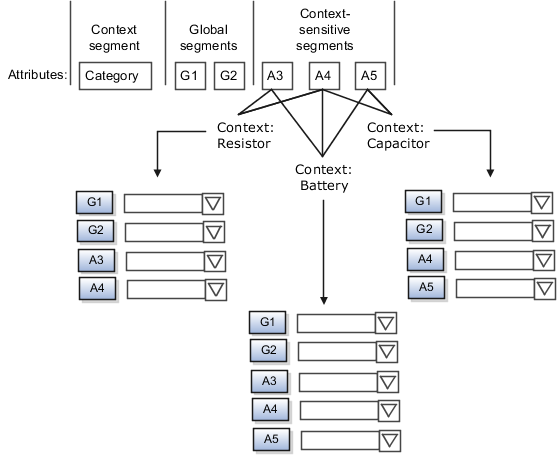Overview of Descriptive Flexfields
Use descriptive flexfields to add attributes to business object entities, and define validation for them.
All the business object entities that you can use in the application are enabled for descriptive flexfields. However, configuring descriptive flexfields is an optional task.
Context
A descriptive flexfield can have only one context segment to provide context sensitivity. The same underlying database column can be used by different segments in different contexts.
For example, you can define a Dimensions context that uses the following attributes:
-
ATTRIBUTE1 column for height
-
ATTRIBUTE2 column for width
-
ATTRIBUTE3 column for depth
You can also define a Measurements context that uses the same columns for other attributes:
-
ATTRIBUTE1 column for weight
-
ATTRIBUTE2 column for volume
-
ATTRIBUTE3 column for density
Segments and Contexts
The following table lists the different types of descriptive flexfield segments.
|
Segment Type |
Run Time Appearance |
|---|---|
|
Global segment |
Always available |
|
Context segment |
Determines which context-sensitive segments are displayed |
|
Context-sensitive segment |
Displayed depending on the value of the context segment |

Application development determines the number of segments available for configuring. During implementation, configure the flexfield by determining the following:
-
Attributes to add using the available segments
-
Context values
-
The combination of attributes in each context
Value Sets
For each global and context-sensitive segment, you configure the values permitted for the segment. Based on it, the values that end users enter are validated, including interdependent validation among the segments.
Protected Descriptive Flexfield Data
Application developers may mark some data configurations in a descriptive flexfield as protected, indicating that you can't edit them.